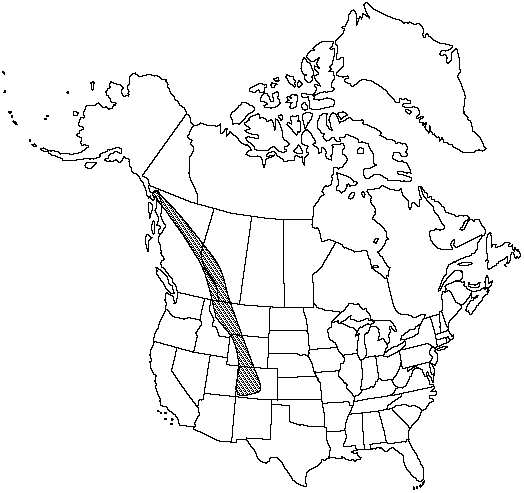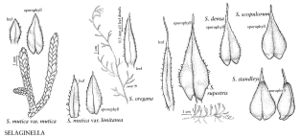Difference between revisions of "Selaginella standleyi"
Smithsonian Misc. Collect. 72: 9. 1920.
FNA>Volume Importer |
FNA>Volume Importer |
||
| Line 50: | Line 50: | ||
|publication year=1920 | |publication year=1920 | ||
|special status= | |special status= | ||
| − | |source xml=https://jpend@bitbucket.org/aafc-mbb/fna-data-curation.git/src/ | + | |source xml=https://jpend@bitbucket.org/aafc-mbb/fna-data-curation.git/src/f6b125a955440c0872999024f038d74684f65921/coarse_grained_fna_xml/V2/V2_461.xml |
|genus=Selaginella | |genus=Selaginella | ||
|subgenus=Selaginella subg. Tetragonostachys | |subgenus=Selaginella subg. Tetragonostachys | ||
Revision as of 18:56, 24 September 2019
Plants terrestrial or on rock, forming cushionlike or rather short, loose mats. Stems decumbent to short-creeping, not readily fragmenting, irregularly forked, without budlike arrested branches, tips straight; main stem upperside and underside structurally slightly different, inconspicuously indeterminate, lateral branches radially symmetric, determinate, strongly ascending, 1-forked. Rhizophores borne on upperside of stems throughout stem length, 0.2–0.35 mm diam. Leaves monomorphic, in poorly defined pseudowhorls of 5 or 6, tightly appressed, ascending, green, linear, linear-oblong or linear-lanceolate, (2.5–)3–4.5 mm (smaller on upperside leaves and in ascending buds); abaxial ridges present; base decurrent, oblique, glabrous or rarely pubescent; margins short-ciliate to denticulate, cilia transparent, scattered, spreading to ascending, 0.05–0.07(–0.1) mm; apex keeled, obtuse, rather abruptly bristled; bristle usually yellowish or transparent to opaque, slightly puberulent or smooth, (0.4–)0.7–1.25 mm. Strobili solitary, 0.5–1(–2.3) cm; sporophylls deltate-ovate, rarely ovate-lanceolate, abaxial ridges well defined, base glabrous, margins short-ciliate to denticulate on distal 3/4, apex keeled, strongly truncate in profile, abruptly bristled.
Habitat: Rock crevices, granitic outcrops, gravelly soil, bare soil, or alpine meadows
Elevation: 2000–3700 m
Distribution

Alta., B.C., Alaska, Colo., Mont., Wyo.
Discussion
R. M. Tryon (1955) reported an elevation range of 1500–4660 m for Selaginella standleyi. I have not seen specimens from these lower and higher elevations.
Selaginella standleyi is a member of the S. densa complex. It has sometimes been confused with S. watsonii and S. sibirica; it is, however, rather easy to distinguish by leaf and strobilus characters.
Selected References
None.
